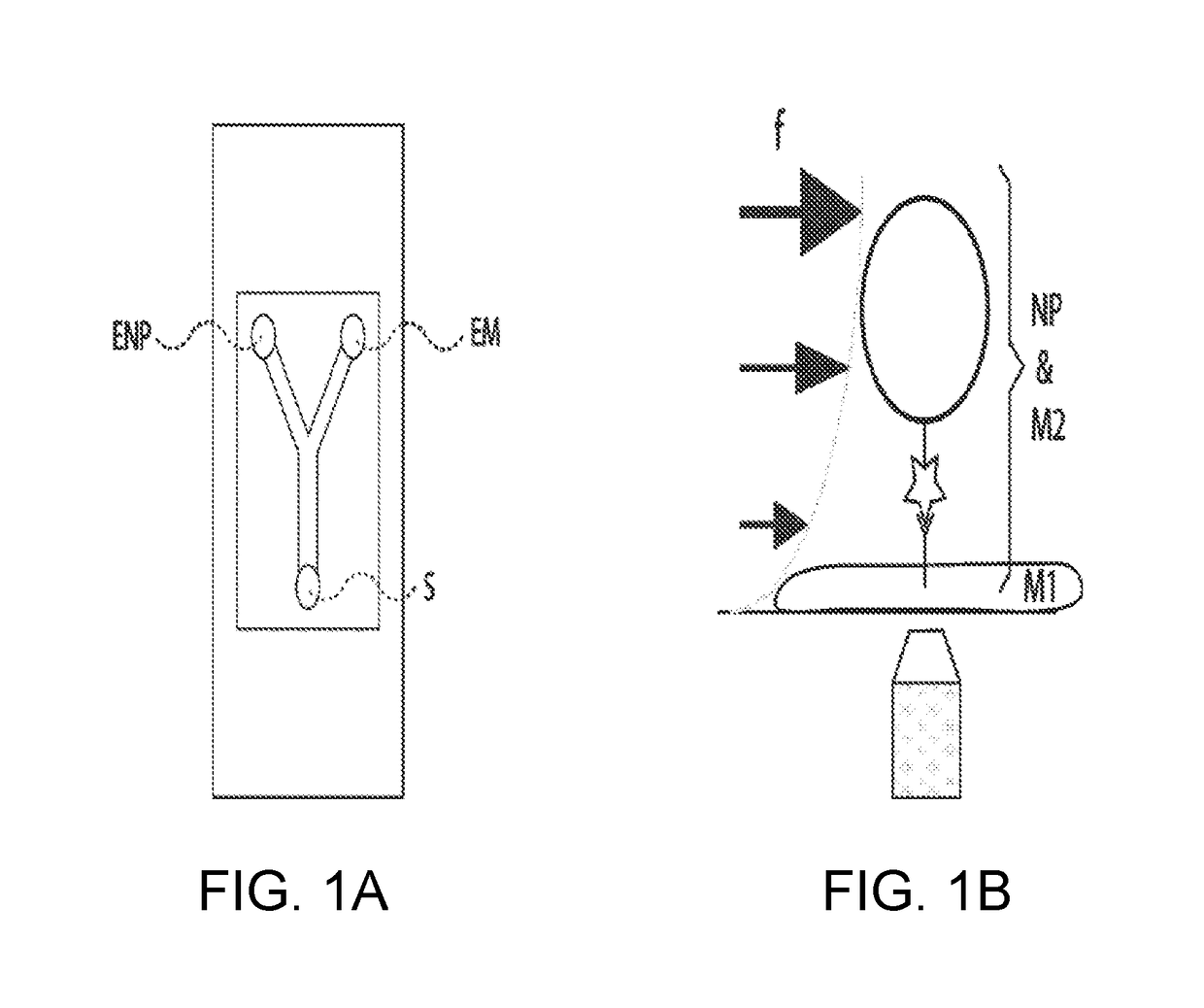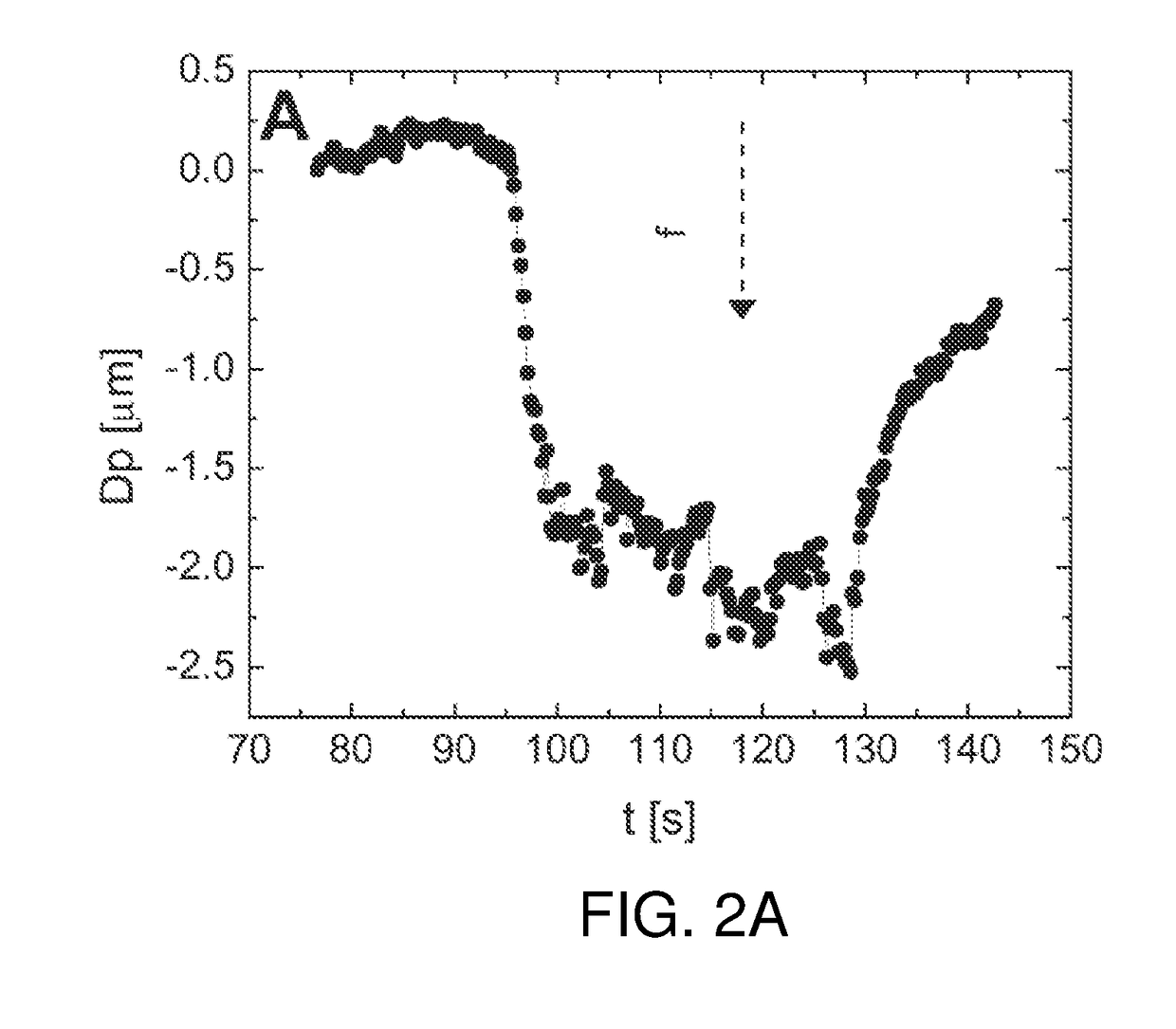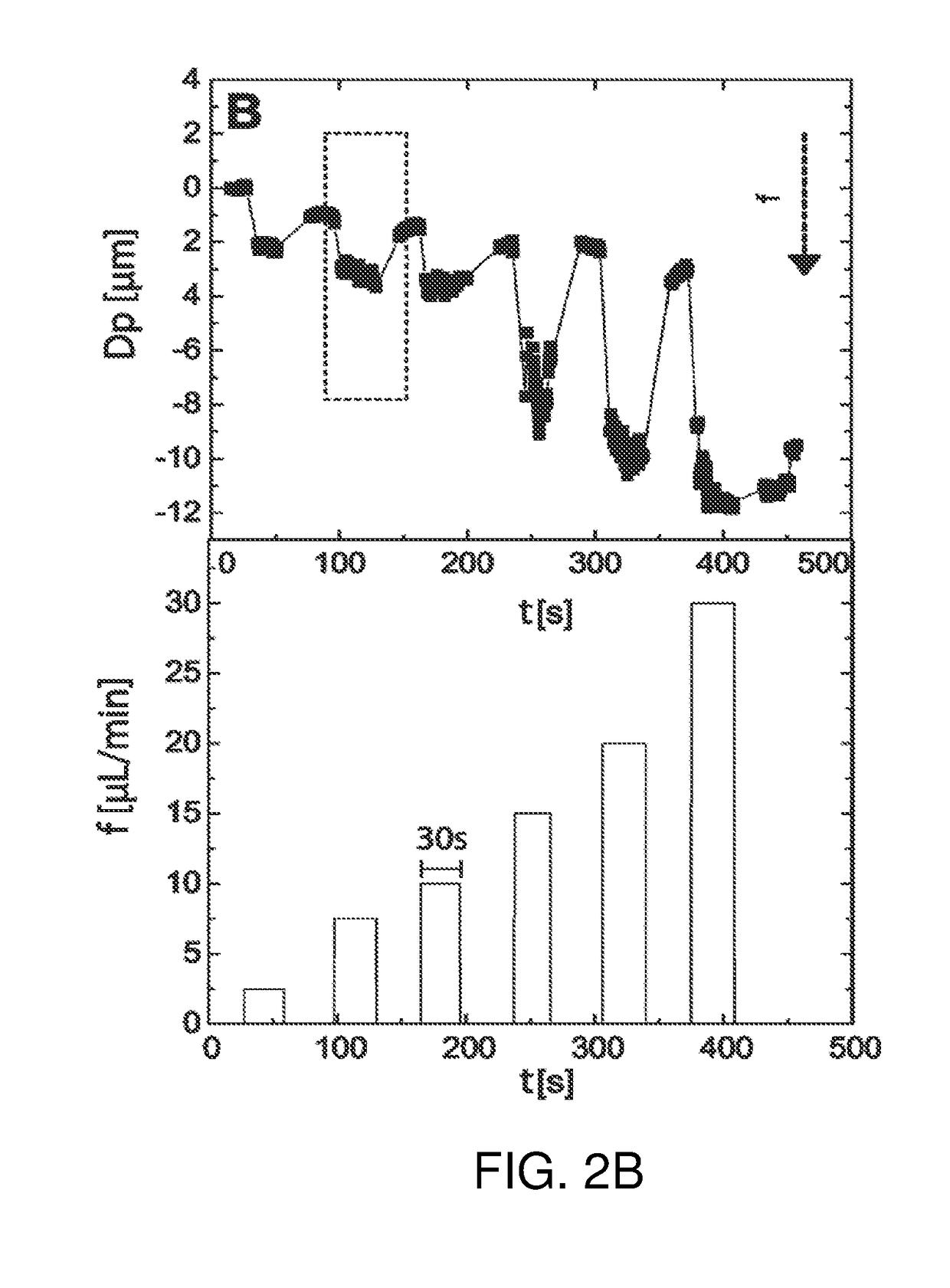Method and device for analysing molecular interactions, and uses thereof
a molecular interaction and molecular structure technology, applied in the field of molecular interaction analysis methods and devices, can solve the problems of low signal modification during the binding of small molecules, high throughput measurement of biomolecular interactions, and in particular, oligonucleotides,
- Summary
- Abstract
- Description
- Claims
- Application Information
AI Technical Summary
Benefits of technology
Problems solved by technology
Method used
Image
Examples
example 1
Cell Membrane Properties
1) Characteristics of the Particles and Coupling to a Peptide Toxin
[0113]Nanoparticles (NPs) of yttrium vanadate doped with europium ions, Y0.6Eu0.4VO4, between 20 and 80 nm in size, are obtained by coprecipitation of Y(NO3)3, Eu(NO3)3 and Na3VO4, as described in the document Huignard et al. ([13]). These nanoparticles are fluorescent: the europium ions inside these nanoparticles can be excited at 466 nm and emit a fluorescence centered on 617 nm.
[0114]The particle is coupled to a peptide toxin via a homobifunctional crosslinker, bis(sulfosuccinimidyl)suberate (BS3). The coupling method is the following and is described in greater detail by Casanova et al. (D. Casanova et al., J. Am. Chem. Soc. 129, 12592 (2007) ([46])):[0115]i) selection of the nanoparticles by size, by centrifugation;[0116]ii) transfer of the NPs from the aqueous solvent to the solvent dimethyl sulfoxide (DMSO);[0117]iii) first acylation reaction between the nanoparticles and the BS3 crossl...
PUM
| Property | Measurement | Unit |
|---|---|---|
| size | aaaaa | aaaaa |
| size | aaaaa | aaaaa |
| mass Péclet number | aaaaa | aaaaa |
Abstract
Description
Claims
Application Information
 Login to View More
Login to View More - R&D
- Intellectual Property
- Life Sciences
- Materials
- Tech Scout
- Unparalleled Data Quality
- Higher Quality Content
- 60% Fewer Hallucinations
Browse by: Latest US Patents, China's latest patents, Technical Efficacy Thesaurus, Application Domain, Technology Topic, Popular Technical Reports.
© 2025 PatSnap. All rights reserved.Legal|Privacy policy|Modern Slavery Act Transparency Statement|Sitemap|About US| Contact US: help@patsnap.com



